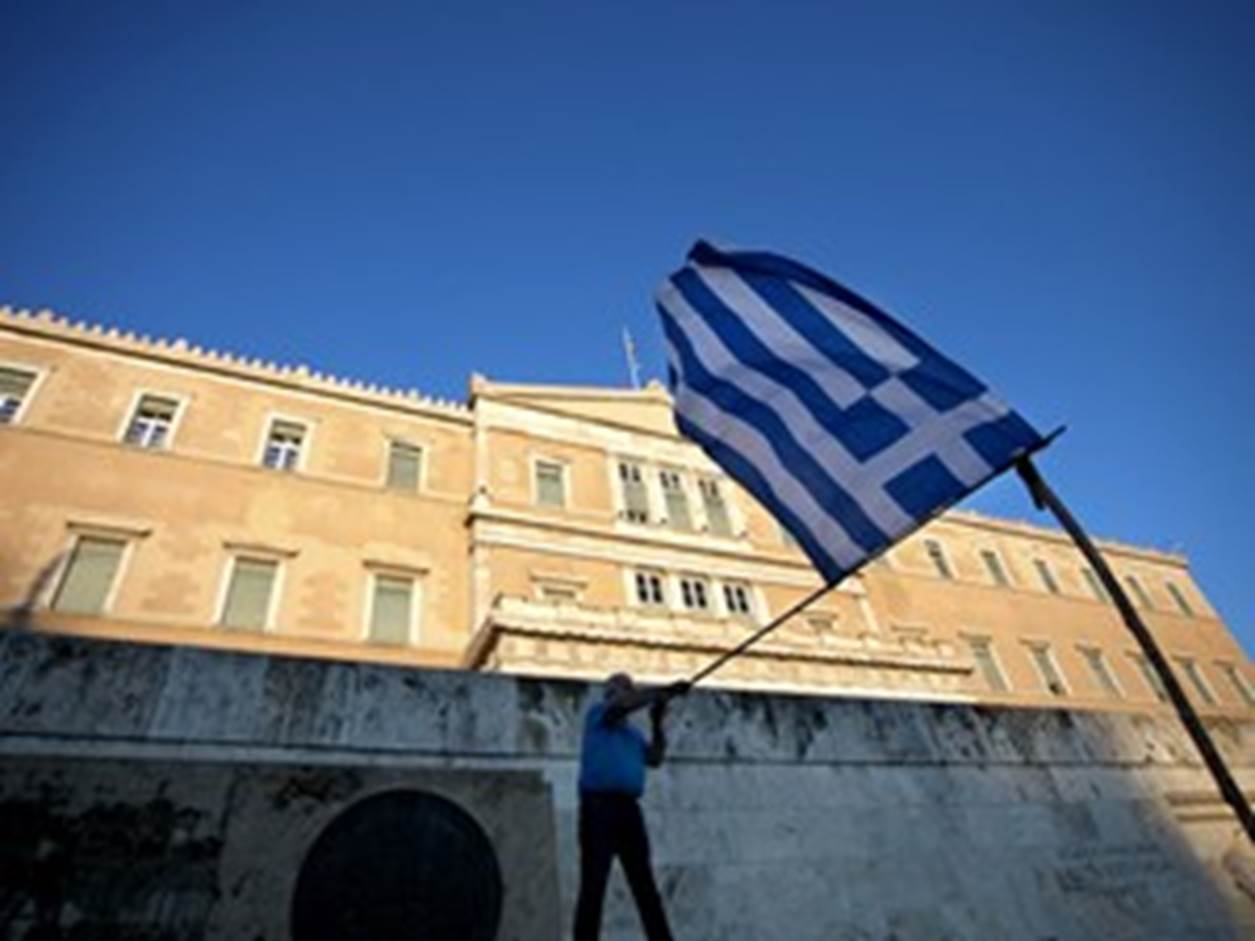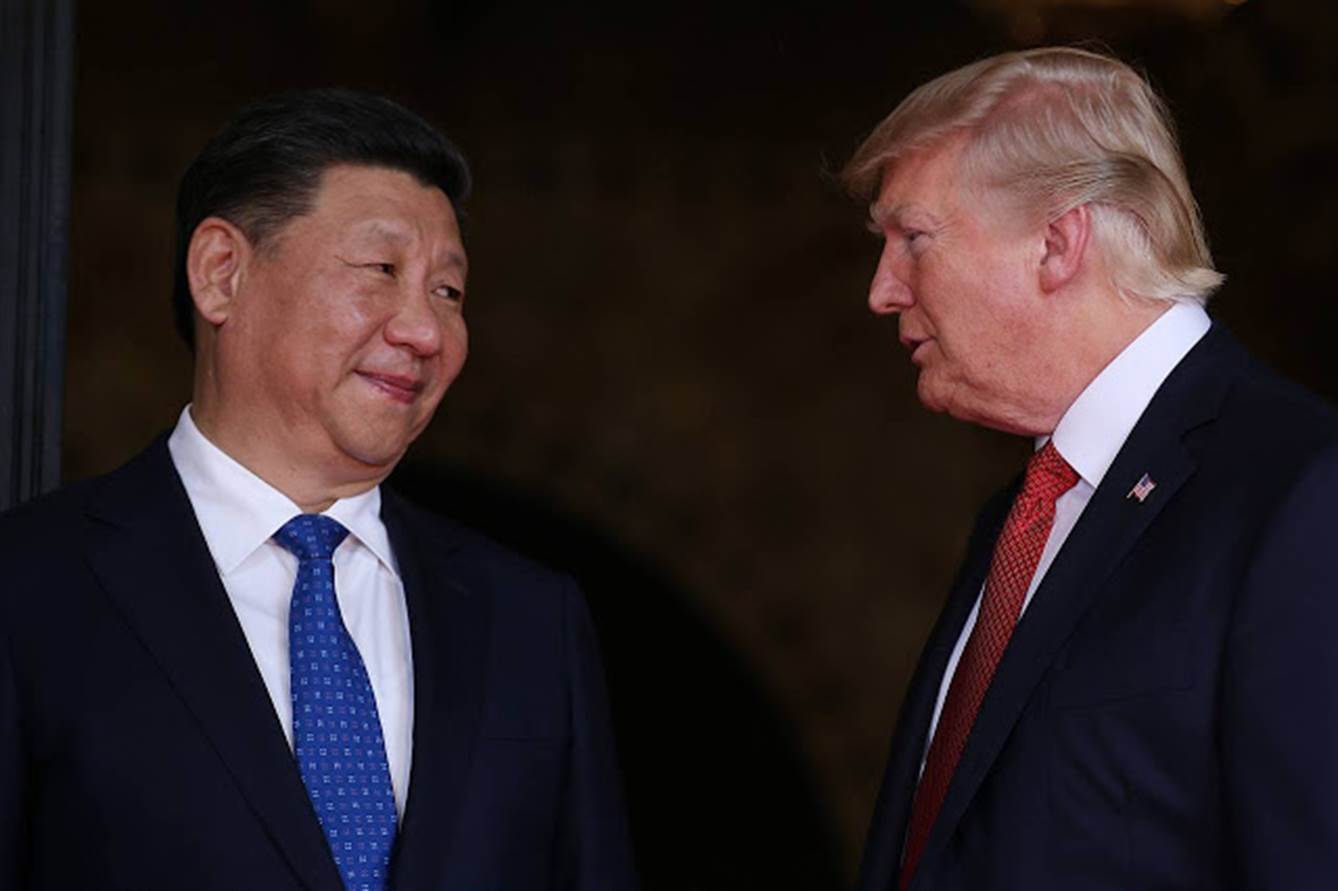ANALISIS DE POST EXTERNOS
GRECIA Y FMI; WHOLE FOODS Y US-CHINA WAR
Por:Dennis Falvy
AN IMF BRIDGE TO SOMEWHERE FOR GREECE ?
By : Mohamed A. El-Erian.

ZURICH – The International Monetary Fund has resurrected an old technique – commonly used in the 1980s during the Latin American debt crisis – that would allow Greece to avoid a payment default next month on debt owed to European creditors. The reprieve also gives the IMF and its European partners time to sort out their technical differences on the struggling country’s growth and budget outlook. But the Fund’s elegant compromise still leaves Greece under the shadow of an enormous debt overhang; reducing it requires that Europe find a way to set aside national politics and act on the basis of economic logic and necessity.
Europe and the IMF have been unable to reconcile two views of Greece’s debt sustainability, with the two sides’ differences spilling over into the public domain. Guided mainly by a cash-flow analysis, European authorities argue that low interest rates and long maturities have made the nation’s debt sustainable. But the Fund notes that, at almost 200% of GDP, Greece’s stock of debt deters investment and capital inflows. For the IMF, meaningful debt reduction is critical for generating the confidence and credibility needed to break Greece out of a prolonged period of impoverishment.
This is not the only area of disagreement between Greece’s two major creditors. They also differ on the realism of some key economic projections, including the important nexus between growth and the government budget, with Europe adopting a much more optimistic perspective.
For those of us who have been following the Greek economic tragedy for many years, much of the European view continues to defy economic logic – and for a simple reason: European politicians worry about the domestic political consequences of granting Greece debt relief, especially ahead of Germany’s federal election in September. Offering debt relief, it is feared, could undermine the credibility of governing parties and provide a boost to extremist movements.
To be sure, debt forgiveness is tricky, raising complicated issues of fairness and incentives. Yet, in some cases, there comes a time when refusal to forgive debt is more damaging. European officials know as well as the IMF does that Greece has long been at this stage, turning the country into a permanent “ward of the state” within a eurozone that does not accommodate this outcome well. But they seem unable to act.
With Europe and the IMF failing to agree, Greece has been robbed of the additional funding it needs to clear domestic arrears and meet its rather large external debt-service payments in July. Meanwhile, growth is languishing once again, despite the pickup in European economic performance as a whole.
To overcome this bottleneck, the IMF has compromised, by reviving the practice of approving a financing program “in principle.”
An approval in principle signals the Fund’s endorsement of a country’s economic policy intentions.
This can unlock other funding (in this case, from Europe). But the IMF refrains from actually disbursing its own loans, pending a more satisfactory outcome on overall financing assurances (in this case, proper debt relief for Greece).
It is a short-term compromise that acknowledges Europe’s political calendar and constraints, helps Greece avoid a summer default, and safeguards the IMF’s resources. The arrangement would shift more of the financing burden to Europe, where it properly belongs. And it even provides a signal of unity, despite the important disagreements that remain.
But this is nothing more than yet another temporary solution – or, to be less generous, the continuation of what has come to be known as the “extend and pretend” approach. While the immediate funding issue is indeed addressed, not enough is being done to put Greece on a realistic path of medium-term growth and financial viability. It also risks exposing the IMF to even heavier political pressure, accentuating legitimate questions about the uniformity of its treatment of member countries.
Having compromised, the IMF should now stick to its guns and refuse to make its arrangement for Greece operational until it is satisfied on both debt relief and technical assumptions. And, rather than declare victory, as they were inclined to do in a mid-June statement by eurozone finance ministers, European officials should treat this compromise as the next step in softening its increasingly untenable stance on Greek debt.
In the meantime, both sides would be well advised to undertake a careful analysis of previous experiences with programs that were approved in principle, rather than becoming immediately operational. When defined well, including by specifying a short period for the prospective shift to being fully operational, such programs can serve as a catalyst and conduit for relaxing a binding constraint on growth and financial viability. They need to be part of a constructive process. They do not work as standalone solutions.
Notwithstanding some bumps along the way, the succession of such programs in the 1980s helped avoid disruptive defaults, and culminated in meaningful reductions of debt and debt-service obligations, which helped several Latin American economies restore high growth and financial viability. A few years later, the process was repeated successfully in the debt-reduction programs for low-income countries under the HIPC (Heavily Indebted Poor Countries) initiative.
The grudging short-term compromise between the IMF and Europe comes after months of sometimes acrimonious discussions. For the sake of Greece, and for the credibility of their own future interactions, they should view it as a stepping-stone to the (long-delayed) definitive resolution of Greece’s economic and financial malaise. Greek citizens have waited, and suffered, long enough.
AMAZON´S MARGIN-CRUSHER INVADES THE GROCERY STORE´S
Amazon.com’s purchase of Whole Foods is a targeted bet on the part of the grocery business in which it has the best prospects and is awful news for competitors such as Kroger and Wal-Mart and others
By : Justin Lahart and Spencer Jakab
Amazon.com ’s AMZN +2.99%▲ purchase of Whole Foods WFM +27.26%▲ is a rounding error for the giant online retailer. For the struggling grocery industry, it is the biggest shift in a century.
Amazon.com already sells groceries, of course, along with nearly everything else, but skeptics have pointed out that supermarkets are one business that may be largely safe from its mushrooming retail empire. Today’s deal may prove the skeptics wrong.
Whole Foods will give Amazon a much bigger footprint in the food business. In addition to over 460 stores, Amazon also will be getting the high-end grocer’s distribution chain. That will allow its food delivery service, which is so far limited to only a handful of cities, to rapidly enter multiple markets.
Moreover, Whole Foods is concentrated in the richer, higher-density markets where delivery makes the most sense. A quick glance at its store locations shows this. It has 28 stores in health-conscious Colorado and Connecticut combined. Kentucky and Alabama, with an almost identical population but lower incomes, education levels and population density, have six stores combined, one each in their major urban centers.
That could give it a leg-up on other food-delivery ventures such as Royal Ahold Delhaize’s Peapod and venture-backed Blue Apron Holdings. The cache of the Whole Foods name—it was named most-admired food and drugstore by Fortune last year—could also make it a formidable competitor in the delivery business.
Whole Foods also operates at much higher profit margins than other grocers, thanks in part to the higher markups it gets for many of its upscale items. It has a gross profit margin of 34%, which compares to 21% for Kroger Co. If Amazon’s tolerance for lower profit margins in its retail business translates into its grocery venture, it could rapidly compress profitability in the sector.
Amazon’s timing for the deal appears impeccable. Its $42 a share offer represents a modest 27% premium to Whole Foods’s closing price on Thursday and just 18% to its closing price a day earlier. The entire grocery sector had sold off in the wake of a plunge in Kroger shares following a profit warning.
Even with the deal premium, Amazon’s $13.7 billion price tag including debt compares to a debt-adjusted market value of $23 billion for Whole Foods less than four years ago when it had a fifth fewer stores.
WHOLE FOODS
Whole Foods also operates at much higher profit margins than other grocers. Photo: Joe Raedle/Getty Images
And, while it seems somewhat surprising that Amazon is paying cash rather than some combination of shares and cash despite having one of the best-performing large-company stocks in recent years, it is more likely to make the deal accretive to earnings per share. The price represents less than 3% of Amazon’s own market value. Indeed, the rebound in Amazon’s stock price as it began trading shortly after the news broke added as much market value as the purchase price.
Rounding error or not, this is Amazon’s biggest acquisition ever and it will be consequential for the grocery industry. Amazon’s entry into a new business is awful news for anyone currently in it, and initial investor reactions show that this should be no exception.
Consider Kroger’s share price. Following its swoon on Thursday, the largest this century, its stock was off by an additional 15% in early trading on Friday in response to its formidable new competitor. And Wal-Mart , the world’s largest retailer by sales, America’s largest seller of food and Amazon’s most credible old-line competitor, saw its market value drop by $14 billion.
The Amazon-effect has finally hit the grocery business and it has been with a bang.
What Are the Odds of a U.S.-China War?
Handicapping whether the rise of one power inevitably leads to armed conflicto
By : Andrew Browne




